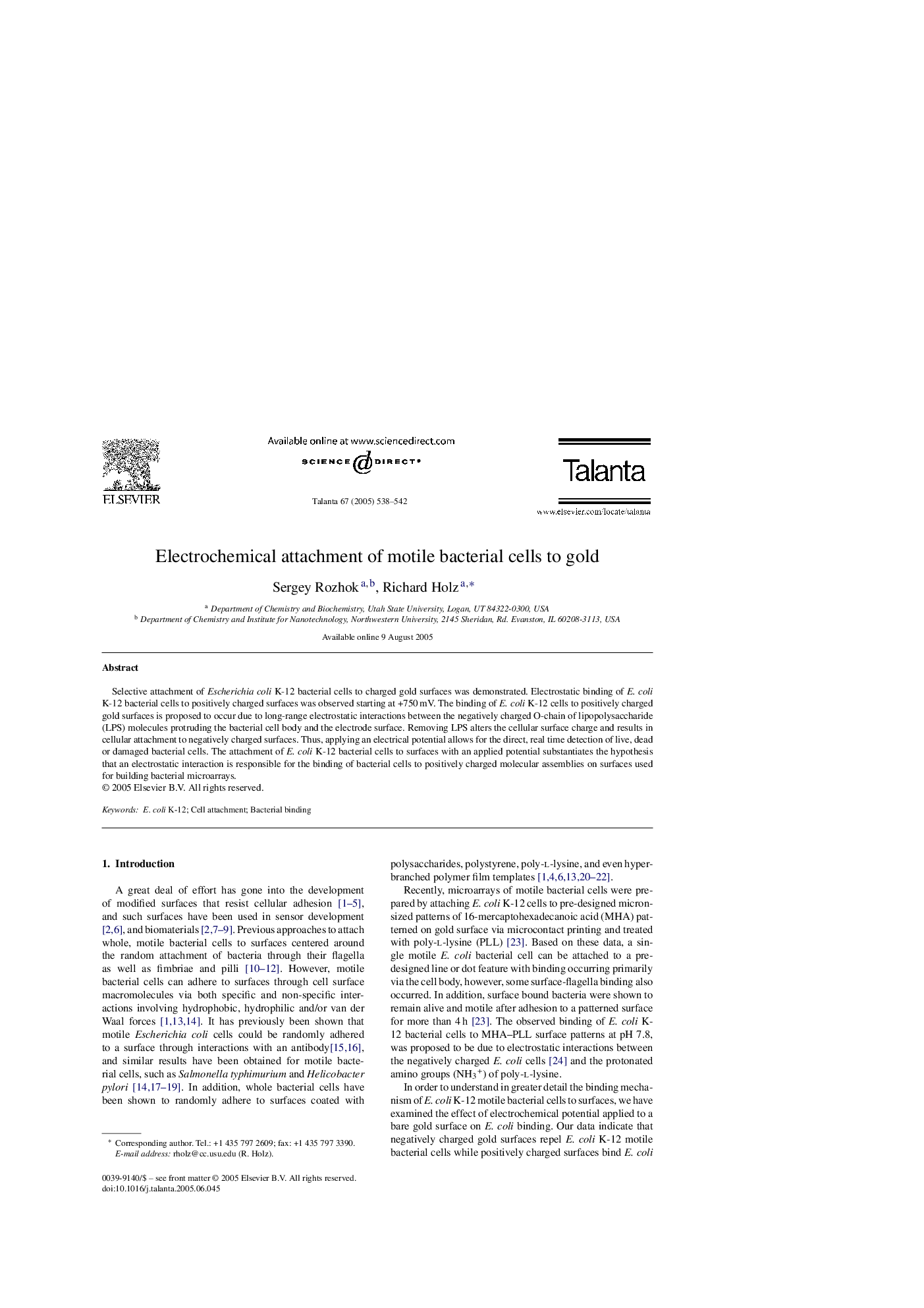| Article ID | Journal | Published Year | Pages | File Type |
|---|---|---|---|---|
| 10560623 | Talanta | 2005 | 5 Pages |
Abstract
Selective attachment of Escherichia coli K-12 bacterial cells to charged gold surfaces was demonstrated. Electrostatic binding of E. coli K-12 bacterial cells to positively charged surfaces was observed starting at +750Â mV. The binding of E. coli K-12 cells to positively charged gold surfaces is proposed to occur due to long-range electrostatic interactions between the negatively charged O-chain of lipopolysaccharide (LPS) molecules protruding the bacterial cell body and the electrode surface. Removing LPS alters the cellular surface charge and results in cellular attachment to negatively charged surfaces. Thus, applying an electrical potential allows for the direct, real time detection of live, dead or damaged bacterial cells. The attachment of E. coli K-12 bacterial cells to surfaces with an applied potential substantiates the hypothesis that an electrostatic interaction is responsible for the binding of bacterial cells to positively charged molecular assemblies on surfaces used for building bacterial microarrays.
Related Topics
Physical Sciences and Engineering
Chemistry
Analytical Chemistry
Authors
Sergey Rozhok, Richard Holz,
